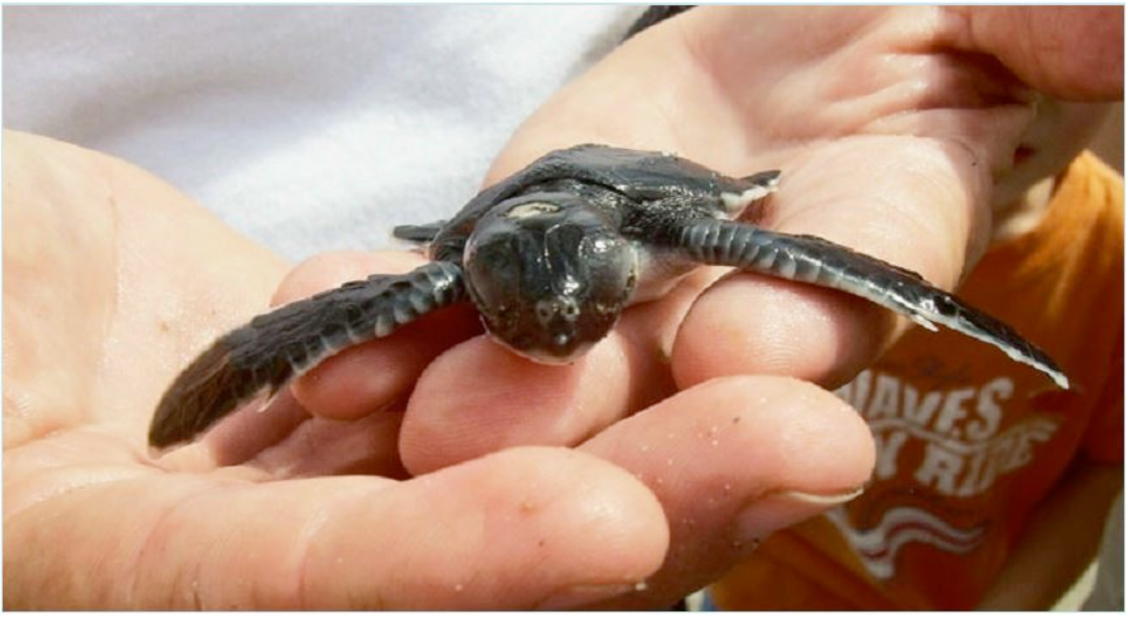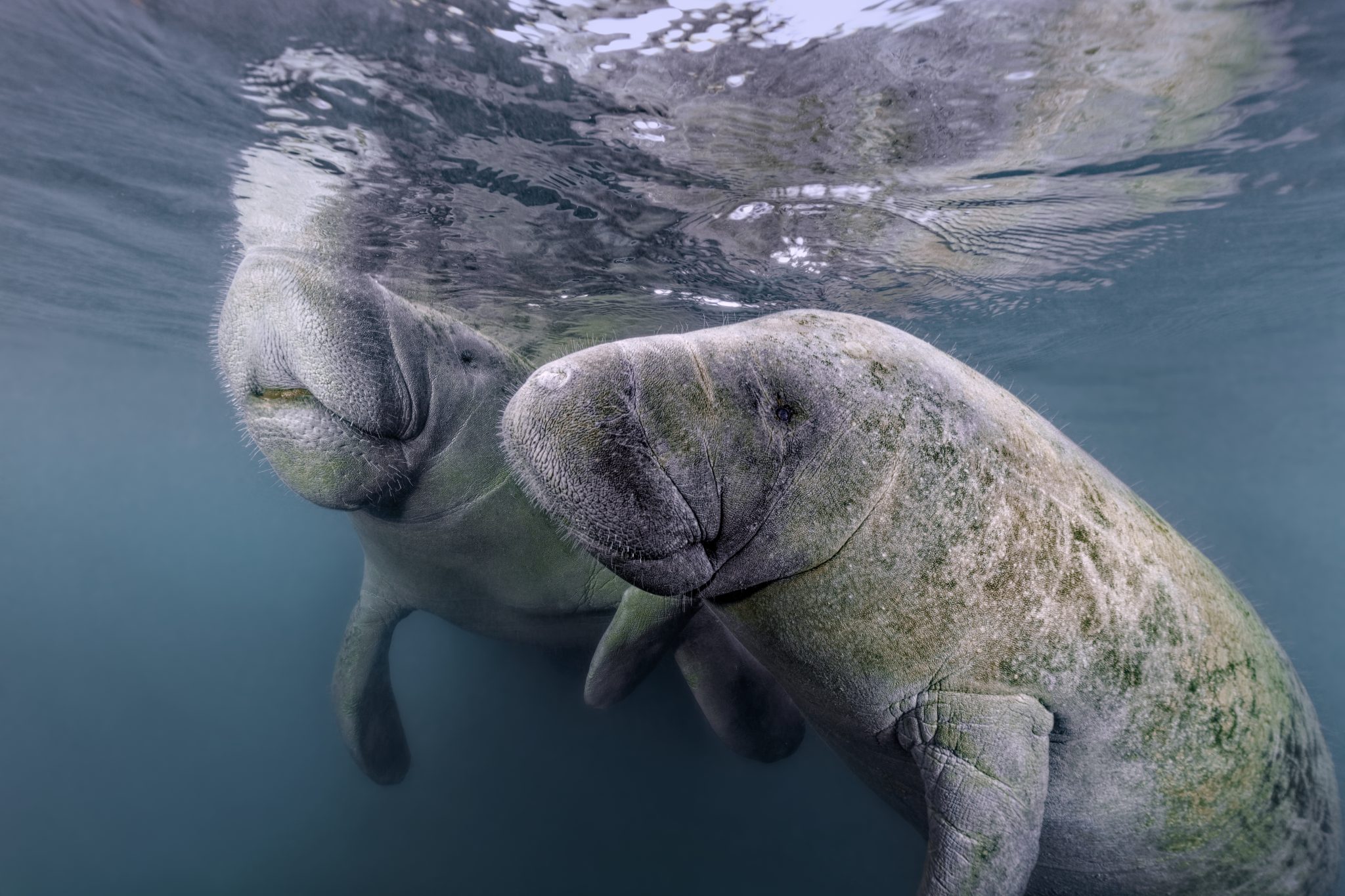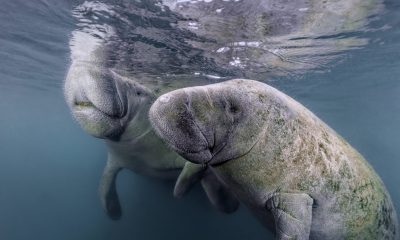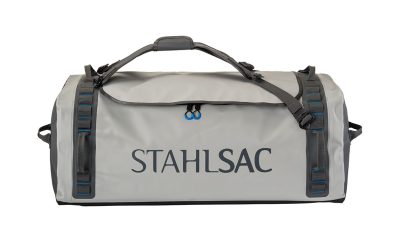Marine Life & Conservation
Sea Turtles – what will it take to save them?

Staci-Lee Sherwood works at Sea Turtle Oversight Protection, Highland Beach Sea Turtle State-wide Morning Survey Program and Sea Turtle Rescue/Research & Ocean Conservation projects (USA)
Sea Turtles have been around about 150 million years and unlike the dinosaurs have managed to survive….so far. Their struggles begin in the nest, which is sometimes filled with trash and fishing line, and so many of the hatchlings are stuck and in need of rescue as newborns. As they crawl to the top of the nest and attempt to make their way to the ocean they are often bombarded with bright artificial lights from the shore that confuse and disorientate, causing them to race toward the light instead of the ocean. In Florida alone thousands of newborn sea turtles die each season because of light disorientation when they are only a few hours old and all of this is human caused and preventable. We are trying to change that.
If they manage to get to the ocean, a host of hungry predators are waiting to snack on them. During their lives they must avoid becoming a meal while at the same staying clear of plastic, chemicals, oil, trash, boats, fishing hooks, fishing nets or killed for their shells and meat, etc. Roughly 86% of all Sea Turtles have plastic in them which is more than any other marine animal. Normally these animals can live as long as humans but their life is a constant 24/7 struggle. As the ocean heats up and becomes more toxic not only are they effected directly but also indirectly as their food supply vanishes due to overfishing and disease. The increased ocean temperature creates a good host environment for bacteria and disease to spread. Then we have the oil spills, which coats them and causes them to die a slow death as they are suffocated by the oil or killed by the chemicals dumped into the ocean after a spill. Either way, Sea Turtles that swim into an oil spill rarely swim out and survive.
Unfortunately for the Sea Turtle they are a migrating species that travel and nest all over the globe. While this migrating can offer better feeding when an old feeding ground becomes depleted it also means more danger. Sea Turtles may have protection here in the U.S. but they don’t have much protection elsewhere in the world where they are still openly hunted for their meat and shell. Once they swim out of protected waters into international waters they become fair game to any fisherman. This problem is also true for other endangered marine animals like Sharks, Whales and Dolphins. Monitoring is abysmal at best and education is done piecemeal. As is the case with so many things, few step back to see the big picture, which is why truly affective conservation methods are few and far between.
Nesting females mature at about age 20 years, leatherbacks a bit sooner, and return to their natal beach to lay their eggs. Coastal development and beach erosion is destroying their habitat which further complicates their survival. These gentle endangered creatures will only continue to survive and share our world if we allow them space to live and nest. As we continue to develop the beaches, dump chemicals into the ocean and deplete the ocean of every fish, the sea turtle’s struggle for survival is questionable.
So what can someone do to help save them from what seems like an endless gauntlet of potential disasters? For starters stop using plastic. One of the biggest problems we are finding in dead post-mortem hatchlings is they have stomachs filled with plastic instead of food. This can also be said for most marine life including shorebirds. Not only is plastic polluting the ocean but the manufacturing of it is incredibly toxic and since it’s a by-product of fossil fuels the demand for plastic keeps us drilling for more oil. In fact more oil is used in the production of plastic than it is refined for gasoline for cars. That’s how serious a problem it is, but anyone can help by switching from plastic bags to reusable ones. Use a stainless steel thermos instead of plastic and never ever litter. Giving up seafood to let the fish population try to recoup from the daily onslaught will really help because commercial fishing kills untold numbers of ‘non target’ species like Sea Turtles. Trawlers, long line hooks and nets that go on for miles have already devastated huge areas of the ocean which is in dire need of a break. Many ocean conservationists have made the choice to drop the plastic and give up seafood for the sake of the ocean, myself included. Beach cleanings are critical and very easy to arrange and in fact anyone can go out and pick up the trash, of which there is always a lot of. Supporting clean sustainable energy like wind and solar and moving away from oil and coal will help curb the acid rain created by coal fired power plants which is warming the ocean and making it very acidic and toxic. (Note on acid rain from Staci-lee – see below)
Just by doing these simple and not so simple things we can turn the tide not only for the Sea Turtle but also for the ocean. If we fail to act now it won’t just be the Sea Turtle we will be losing. For the past 6 years I have been researching and rescuing Sea Turtles so I speak from personal experience in the field and things are even worse than I’ve described. We really are at that tipping point. We hold their future in our hands and unless we get serious about global conservation of the species these living fossils will no longer be living, they will just be fossils….like the dinosaur. For more information about how you can help save Sea Turtles here are a few noteworthy links:
http://seaturtleop.org/broward/ – Sea Turtle Oversight Protection, we rescue disorientated hatchlings and make sure they get into the ocean instead of dying in the road from light pollution.
http://sos-tobago.org/trinbago-turtles/leatherback – Save our Sea Turtles, volunteer program in Tobago working to save one of the biggest Leatherback nesting grounds in the world from poachers.
http://www.conserveturtles.org/ – Sea Turtle Conservancy, working in the U.S. and Costa Rica to save habitat.
http://www.seaturtlesforever.com/ – Sea Turtles Forever, a volunteer program in Costa Rica helping locals switch from poachers to protectors.
(Acid Rain) About acid rain and warming the ocean, I was referring to both oil and coal which contribute to the ocean’s problems differently. Acid rain is caused by the release of nitrogen oxide and sulphur dioxide from coal fired plants which causes the acidification of the ocean which has already happened. Burning fossil fuels and the entire process of drilling and refining oil creates heat in simple terms which warms the atmosphere and stratosphere and raises the core temperature of earth, including that of the ocean which is about 2 degrees warmer. It also releases carbon dioxide which further adds acid to the ocean. Acid rain also destroys forests and there is thinking that with fewer forests (which help shade and cool the earth) that too is causing ocean warming. The release of these chemicals from both coal and oil causes a thinning of the ozone layer and expansion of the 3 existing holes – this allows more UV rays to get through which causes a rise in the core temperature. Finally not only coal and oil but all pollutants we release hover around the earth like a layer of toxins, they don’t evaporate or disappear they just stay in the atmosphere forever which also creates warming. So yes, both coal and oil cause ocean acidification and warming… which is unfortunate since we are addicted to both.

Blogs
Heading out on the water this Summer? Watch for manatees

As National Safe Boating Week approaches, Save the Manatee® Club is urging boaters, and anyone that enjoys Florida’s waterways, to respect and protect the defenseless manatees that inhabit our shared waterways. From May 18 to 24, leading up to Memorial Day Weekend, the campaign aims to raise awareness about recreational boating safety and the importance of safeguarding imperiled manatees during the summer boating season. This week also emphasizes the importance of encouraging boaters to enroll in a boating safety course.
Manatees are semi-migratory marine mammals that are commonly found in shallow estuaries, bays, rivers, canals, and coastal areas throughout Florida and neighboring states. With some manatees venturing as far west as Texas and as far north as Massachusetts, collisions between these gentle giants and watercraft have become distressingly frequent. Boat propellers and high-speed collisions pose significant threats to manatees, often resulting in severe injuries or even death.
Save the Manatee Club is calling on all water enthusiasts to follow essential manatee safety tips to ensure the well-being of the imperiled manatee:
- Obey Speed Zone Signs: Familiarize yourself with and adhere to posted speed limits to prevent collisions with manatees.
- Reduce Glare with Polarized Sunglasses: Wear polarized sunglasses to enhance visibility and spot manatees below the water’s surface.
- Recognize Manatee Signs: Learn to identify signs of manatees in the area, such as swirls or flat spots on the water caused by their movements.
- Respect Manatee Sanctuaries: Keep a safe distance from posted manatee sanctuaries and avoid pursuing or harassing these marine mammals, as it is illegal and can disrupt their natural behaviors.
- Report Distressed Manatees: In Florida, promptly report distressed, injured, tagged, or orphaned manatees to the Florida Fish and Wildlife Conservation Commission (FWC) at 1-888-404-FWCC (3922). Outside of Florida, report sightings to the appropriate state agency or rescue organization. A list of agencies to contact is available at savethemanatee.org/report.
- Protect Seagrass Beds: Avoid boating over seagrass beds and shallow areas where manatees may be feeding. Stick to deep water channels while remaining vigilant, as manatees also utilize these channels during their travels.
- Dispose of Fishing Line Responsibly: Anglers should properly dispose of or recycle used fishing line to prevent entanglement hazards for manatees.
“Each year, National Safe Boating Week provides an excellent reminder for all of us to be aware that we share our waterways with vulnerable manatees,” emphasized Patrick Rose, Aquatic Biologist and Executive Director of Save the Manatee Club. “With the recent Unusual Mortality Event on Florida’s East Coast claiming an alarming number of manatees’ lives, it is more crucial than ever to prevent preventable deaths caused by watercraft collisions. By following manatee-safe boating guidelines, such as obeying speed zones and remaining vigilant for manatees, everyone on the water can contribute to the protection of these gentle giants.”
Save the Manatee Club offers a range of free materials to help safeguard manatees and raise awareness about manatee-safe boating practices. Shoreline property owners and park or marina managers can order aluminum dock signs to alert others about the presence of manatees in their areas. Boaters and paddlers can request packets containing a safety tips card, a waterproof boat banner, and a decal to display on their vessels, providing the number to report manatees in distress. To view and request these materials, visit savethemanatee.org/resources. Save the Manatee Club will also be hosting a live webinar for National Safe Boating Week on Tuesday, May 21st at 6pm EST. To register, visit savethemanatee.org/register.
Blogs
The Ocean Cleanup Breaks 10,000,000 KG Barrier

The Ocean Cleanup, the global non-profit project, has removed a verified all-time total of ten million kilograms (22 million lbs.) of trash from oceans and rivers around the world – approximately the same weight as the Eiffel Tower.
To complete its mission of ridding the oceans of plastic, The Ocean Cleanup uses a dual strategy: cleaning up the Great Pacific Garbage Patch (GPGP) to remove the plastic already afloat in the oceans, while stopping the flow of plastic from the world’s most polluting rivers.
Through cleaning operations in the GPGP and in rivers in eight countries, the cumulative total of trash removed has now surpassed ten million kilograms. This milestone demonstrates the acceleration of The Ocean Cleanup’s impact, while underlining the astonishing scale of the plastic pollution problem and the need for continued support and action.
While encouraging for the mission, this milestone is only a staging point: millions more tons of plastic still pollute our oceans and The Ocean Cleanup intends to continue learning, improving and innovating to solve this global catastrophe.
This announcement comes as governments from around the world meet to continue negotiations to develop a new legally binding instrument to end plastic pollution at INC4 in Ottawa, Canada. Representatives of The Ocean Cleanup will be in attendance and the organization will be urging decision-makers to collaborate towards a comprehensive and ambitious global treaty which addresses plastic at all stages of its life cycle and in all marine environments worldwide, including in areas beyond national jurisdiction.
It is encouraging to see that the need for remediation is reflected in the various options for potential treaty provisions. It is essential that the final treaty contains clear targets for the remediation of legacy plastic pollution, and reduction of riverine plastic emissions.
Tackling plastic pollution requires innovative and impactful solutions. The treaty should therefore incentivize the innovation ecosystem by fostering innovations that make maximal use of data, technology and scientific knowledge – such as those designed and deployed by The Ocean Cleanup.
‘After many tough years of trial and error, it’s amazing to see our work is starting to pay off – and I am proud of the team who has brought us to this point.’ said Boyan Slat, Founder and CEO of The Ocean Cleanup. ‘While we still have a long way to go, our recent successes fill us with renewed confidence that the oceans can be cleaned.’
The Ocean Cleanup was founded in 2013 and captured its first plastic in 2019, with the first confirmed catch in the GPGP coming soon after the deployment of Interceptor 001 in Jakarta, Indonesia. After surpassing one million kilograms of trash removed in early 2022, the non-profit project has since progressed to the third iteration of its GPGP cleaning solution, known as System 03, and a network of Interceptors currently covering rivers in eight countries, with more deployments set for 2024.
About The Ocean Cleanup
The Ocean Cleanup is an international non-profit organization that develops and scales technologies to rid the world’s oceans of plastic. They aim to achieve this goal through a dual strategy: stemming the inflow via rivers and cleaning up the legacy plastic that has already accumulated in the ocean. For the latter, The Ocean Cleanup develops large-scale systems to efficiently concentrate the plastic for periodic removal. This plastic is tracked and traced through DNV’s chain of custody model to certify claims of origin when recycling it into new products. To curb the tide via rivers, The Ocean Cleanup has developed Interceptor™ solutions to halt and extract riverine plastic before it reaches the ocean. Founded in 2013 by Boyan Slat, The Ocean Cleanup now employs a broadly multi-disciplined team of approximately 140. The foundation is headquartered in Rotterdam, the Netherlands.
For more information, visit: theoceancleanup.com and follow @theoceancleanup on social media.
-

 Marine Life & Conservation Blogs3 months ago
Marine Life & Conservation Blogs3 months agoCreature Feature: Swell Sharks
-

 Gear Reviews4 weeks ago
Gear Reviews4 weeks agoGEAR REVIEW – Revolutionising Diving Comfort: The Sharkskin T2 Chillproof Suit
-

 Blogs2 months ago
Blogs2 months agoMurex Resorts: Passport to Paradise!
-

 Blogs3 months ago
Blogs3 months agoDiver Discovering Whale Skeletons Beneath Ice Judged World’s Best Underwater Photograph
-

 News3 months ago
News3 months agoPADI Teams Up with Wellness Brand Neuro to Drive Ocean Change and Create a Blue State of Mind
-

 Gear Reviews3 months ago
Gear Reviews3 months agoGear Review: Oceanic+ Dive Housing for iPhone
-

 Blogs2 months ago
Blogs2 months agoSeagrass Awareness Month brings critical food source for Manatees to centre stage
-

 Marine Life & Conservation2 months ago
Marine Life & Conservation2 months agoSave the Manatee Club launches brand new webcams at Silver Springs State Park, Florida















